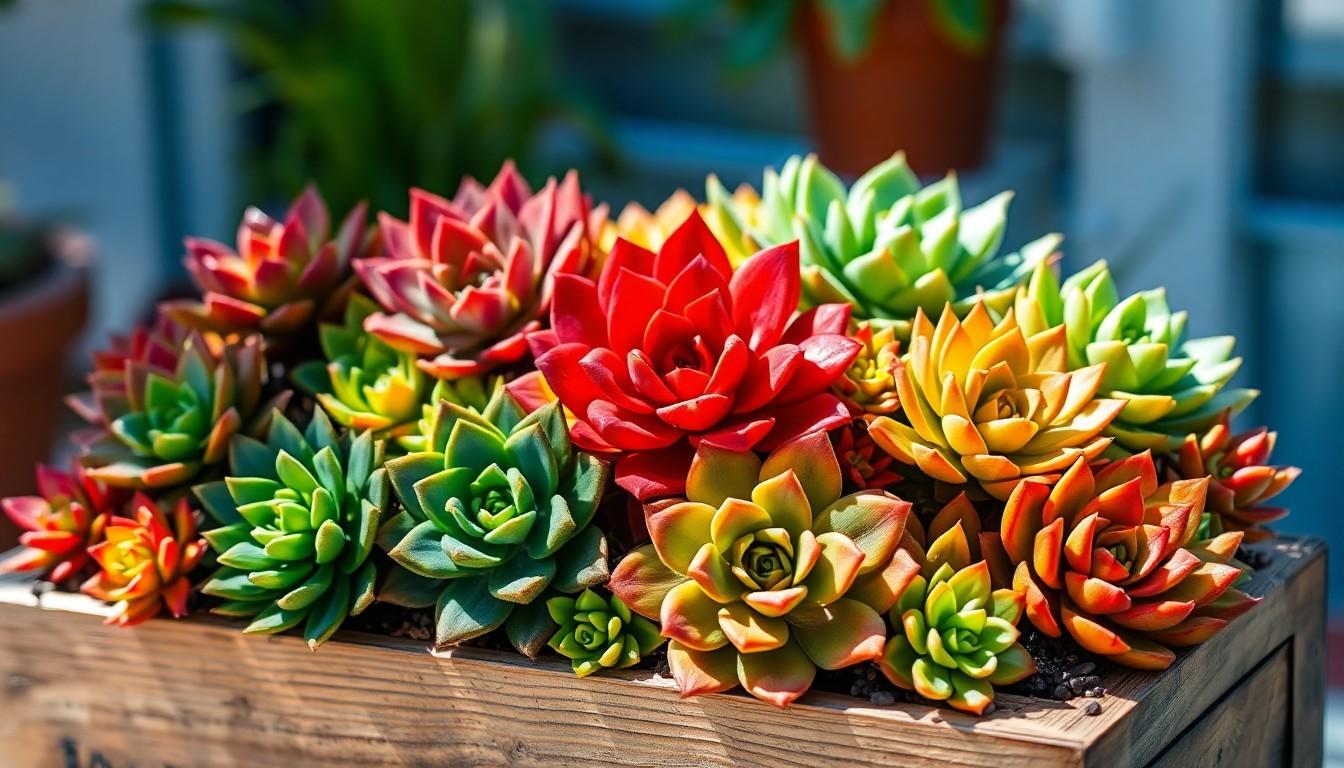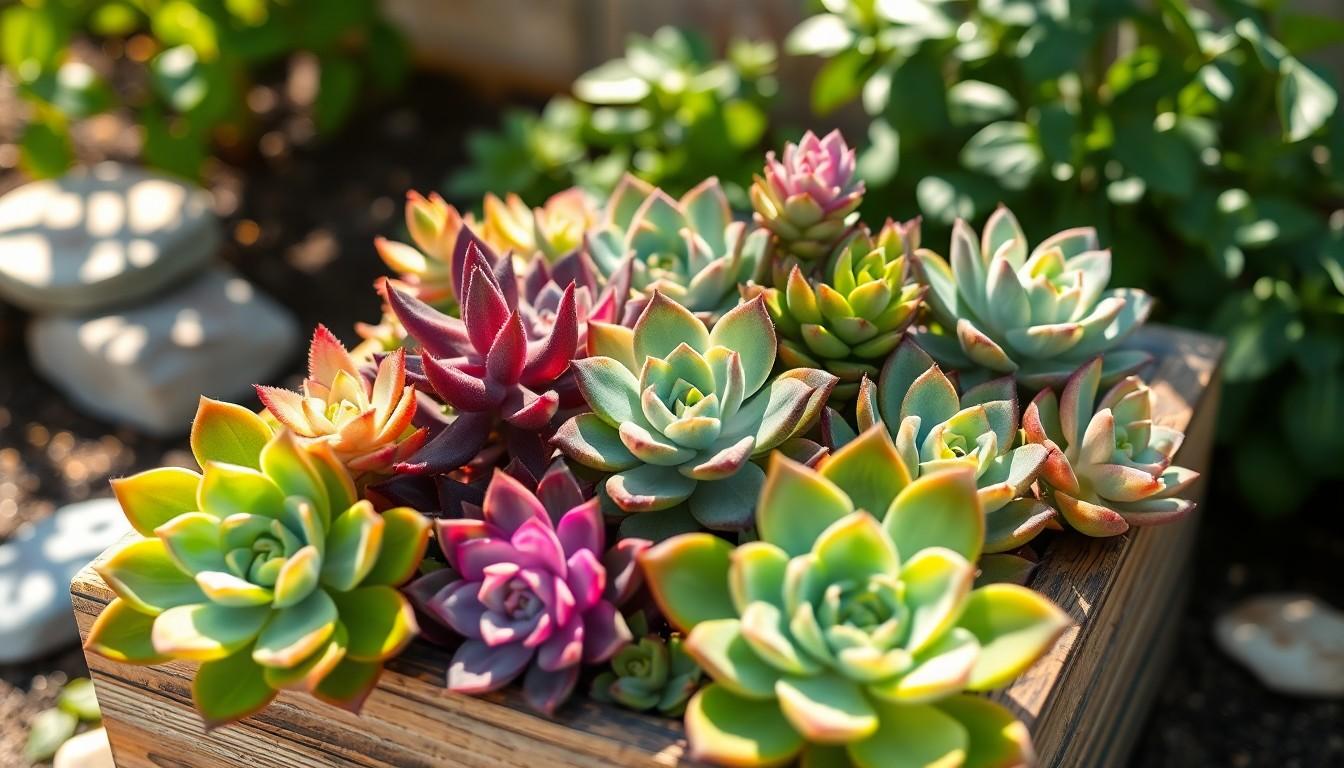Phone:
(701)814-6992
Physical address:
6296 Donnelly Plaza
Ratkeville, Bahamas.

Chicks and hens succulents are the ultimate low-maintenance plants that can turn any dull corner into a vibrant oasis. With their rosette shapes and a kaleidoscope of colors, these charming little green friends are perfect for those who want to add a touch of nature without the fuss. Who wouldn’t want a plant that thrives on neglect and still looks fabulous?
Chicks and hens succulents, known as sempervivum, include various species offering striking visual appeal. These plants are native to Europe and thrive in a range of environments. Home gardeners favor them for their rosette shapes and diverse color palettes, ranging from deep greens to vibrant reds.
The growth habit of chicks and hens is particularly interesting. They form clumps as the mother plant produces offsets referred to as “chicks.” These chicks propagate easily, allowing for simple expansion of a succulent collection. Their hardiness also allows them to endure drought, requiring minimal water once established.
Cultivation remains straightforward. Planting in well-draining soil enhances their resilience against rot. A sunny location encourages optimal growth, ensuring lush foliage and vibrant colors. Fertilization is not necessary, making it ideal for low-maintenance gardens.
Chicks and hens offer versatility in landscaping. They fit into rock gardens and container arrangements seamlessly. Their ability to adapt to various conditions enables them to flourish in both indoor and outdoor settings.
Pests and diseases rarely pose a threat to these hardy succulents. Occasional infestations can occur but usually do not lead to significant issues. Maintenance includes removing dead leaves and ensuring adequate airflow.
With these qualities, chicks and hens succulents serve as a practical choice for gardeners of all levels. Their aesthetic appeal and ease of care contribute to their growing popularity in various landscapes.

Chicks and hens succulents, renowned for their hardy nature, offer various gardening advantages.
Low maintenance requirements make chicks and hens a popular choice for many gardeners. These plants thrive with minimal care, often flourishing in less-than-ideal conditions. Regular watering is unnecessary after they’ve established roots. Routine tasks include occasional dead leaf removal and ensuring adequate airflow. Their ability to grow in diverse environments further simplifies care routines. Whether in gardens or containers, these succulents adapt easily. The straightforward cultivation process appeals to both novice and experienced gardeners alike.
Drought resistance characterizes chicks and hens, making them ideal for arid climates. These plants store water in their leaves, enabling them to survive long dry spells. In fact, established specimens can go weeks without water. Stressful conditions, such as extreme heat, don’t severely impact their health. Reducing water use in gardens aligns with environmentally friendly practices. These succulents also contribute to water conservation efforts. By choosing them, gardeners promote sustainability while enjoying vibrant greenery. Their resilience allows for diverse landscaping opportunities even in challenging environments.
Chicks and hens succulents include several popular varieties, each with unique characteristics and colors. Two standout types are Sempervivum and Echeveria.
Sempervivum, commonly known as houseleek, thrives in rocky, dry environments. Its rosettes display a range of colors, from deep greens to vibrant reds. The flowers bloom in summer, showcasing long stalks dotted with star-like blooms. This variety maintains its form well, even in adverse conditions, making it ideal for gardens and containers. Notably, Sempervivum excels in propagation, producing numerous offsets known as “chicks.” Each chick can be easily separated and planted, ensuring gardeners can enjoy more plants with minimal effort.
Echeveria captivates with its stunning rosette shapes and diverse color palette. Originating from Mexico and Central America, this succulent prefers bright, indirect sunlight. Some notable varieties include ‘Lola’ and ‘Bluebird,’ recognized for their striking hues. Echeveria stands out for its fleshy leaves, which store water efficiently, allowing it to survive periods of drought. Additionally, Echeveria takes well to propagation through leaf or stem cuttings. This versatility makes it a favorite among succulent enthusiasts, enhancing both indoor and outdoor spaces.
Chicks and hens succulents thrive under specific growing conditions that enhance their beauty and resilience. Proper care ensures these plants remain vibrant and healthy.
Well-draining soil is crucial for chicks and hens. A mix of potting soil with sand or perlite promotes optimal drainage and airflow. Heavy soils retain moisture, risking rot for the plants. Potting mixtures designed for cacti work well too. Using containers with drainage holes helps excess water escape, aiding root health. Regularly checking soil moisture levels is important; the top inch should dry out between waterings. Overall, achieving the right soil balance enhances growth and sustains the succulents.
Full sun exposure is ideal for these succulents. About six hours of sunlight daily promotes color vibrancy and robust growth. They adapt to partial shade but may exhibit stretched growth if light is insufficient. Watering practices significantly affect their health. Allowing the soil to dry completely between waterings prevents overwatering issues. During hot months, watering every two weeks suffices; in cooler seasons, extending the intervals is advisable. Observing the plant’s response to watering helps in maintaining an effective care routine.
Chicks and hens succulents face few pests and diseases, making them easy to care for. Aphids can occasionally attack new growth, sucking sap and hindering development. Regularly checking for these pests and promptly removing them prevents significant damage.
Root rot appears when plants are overwatered or sit in poorly draining soil, leading to wilting and discoloration. Ensuring the soil dries out between waterings significantly reduces this risk.
Fungal infections may occur in overly humid conditions. Utilizing well-draining soil and maintaining good air circulation around the plants limits the likelihood of fungal issues.
Mealybugs may infest succulents, appearing as white cottony spots. Isolating infected plants and treating them with insecticidal soap or neem oil helps eliminate these pests.
When planted outdoors, slugs and snails may pose a threat. Implementing physical barriers or using organic slug pellets minimizes their impact on plants.
Overall, regular observation helps maintain the health of chicks and hens succulents. Addressing issues quickly ensures the plants remain vibrant and thrive in their environment.
Chicks and hens succulents stand out as a fantastic choice for anyone looking to add beauty and resilience to their garden or home. Their vibrant colors and unique rosette shapes create eye-catching displays that require minimal care. With their ability to thrive on neglect and endure drought conditions they’re perfect for busy gardeners or those new to plant care.
These hardy plants not only enhance aesthetics but also promote sustainable gardening practices. By incorporating chicks and hens into various landscapes gardeners can enjoy the benefits of low maintenance greenery while reducing water usage. Whether planted in rock gardens or containers these succulents offer versatility and charm that make them a beloved addition to any plant collection.